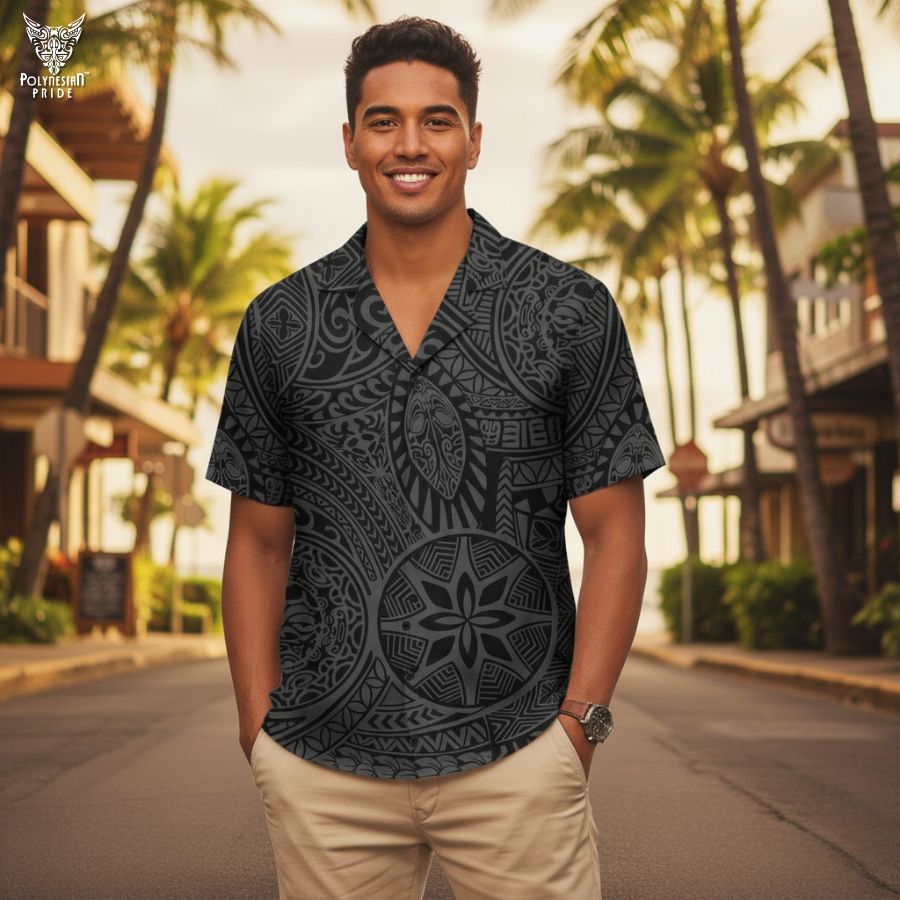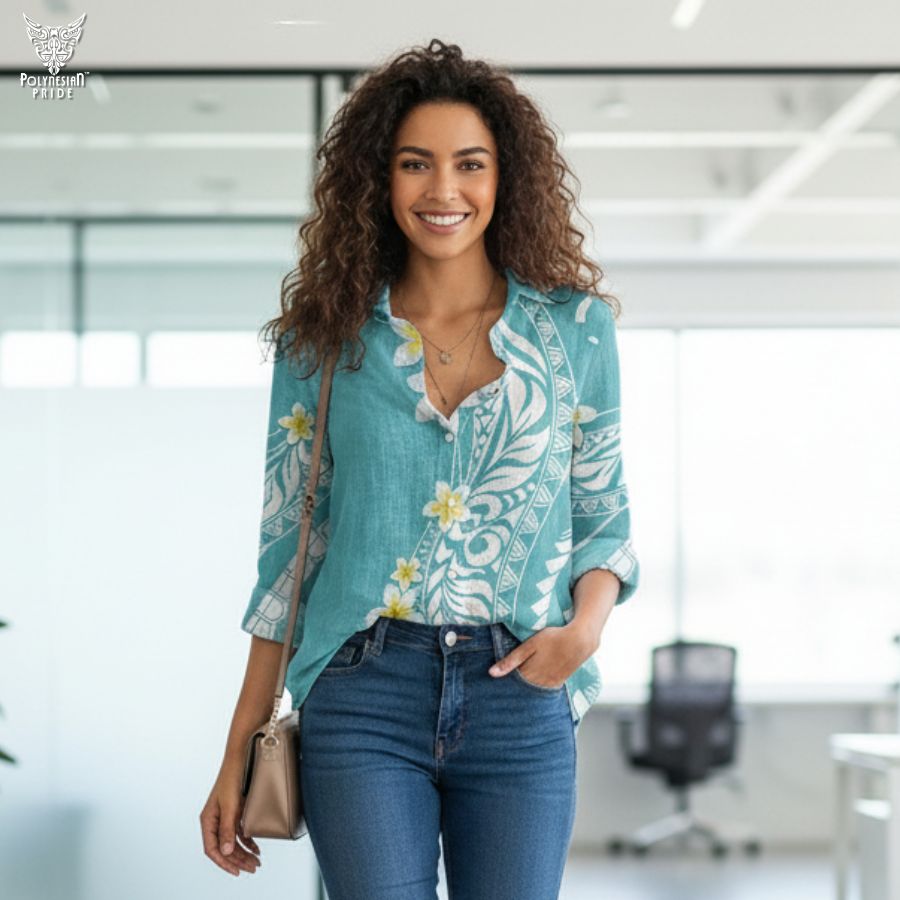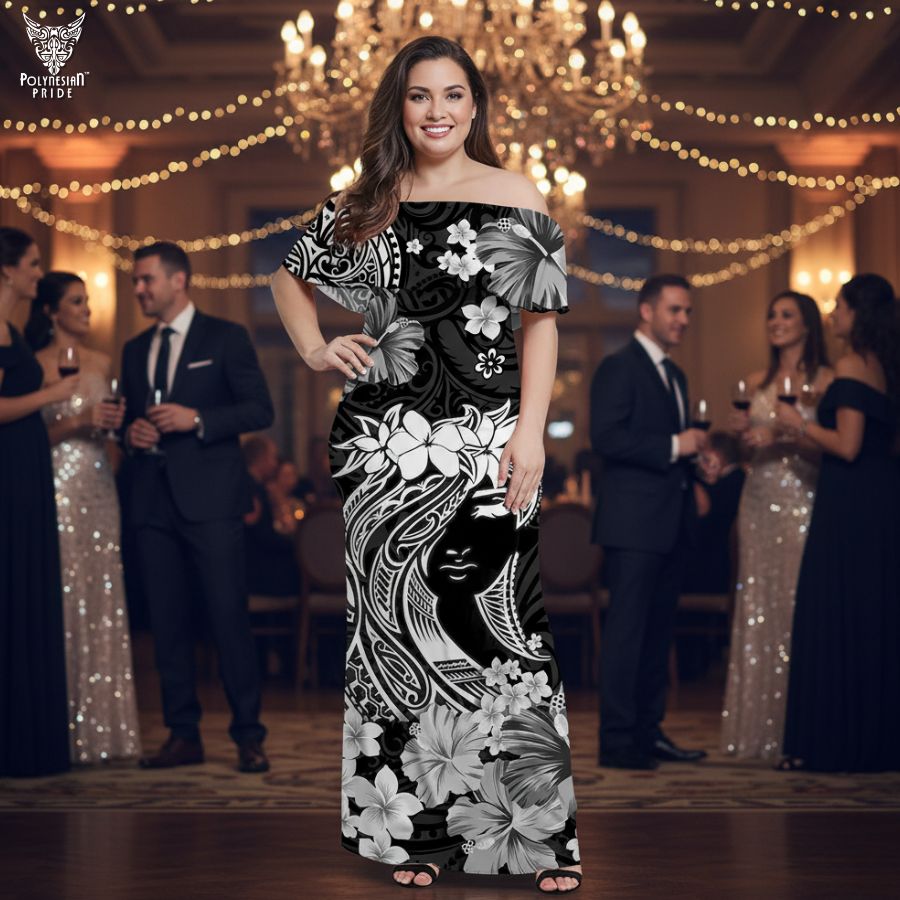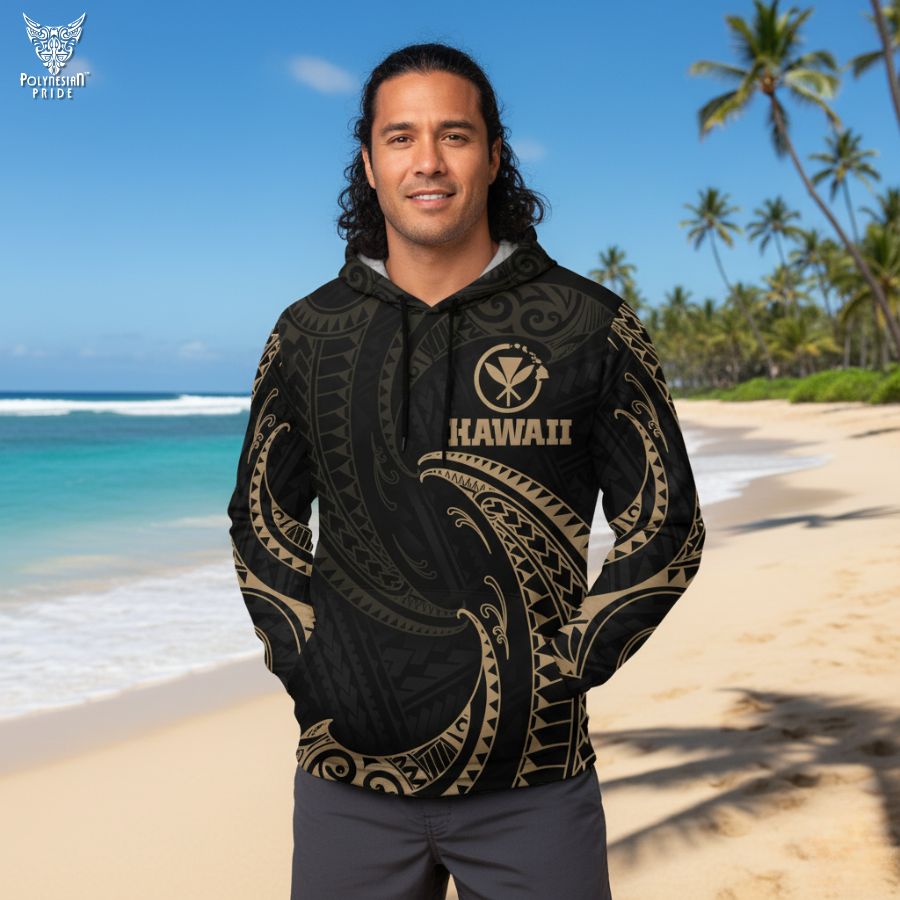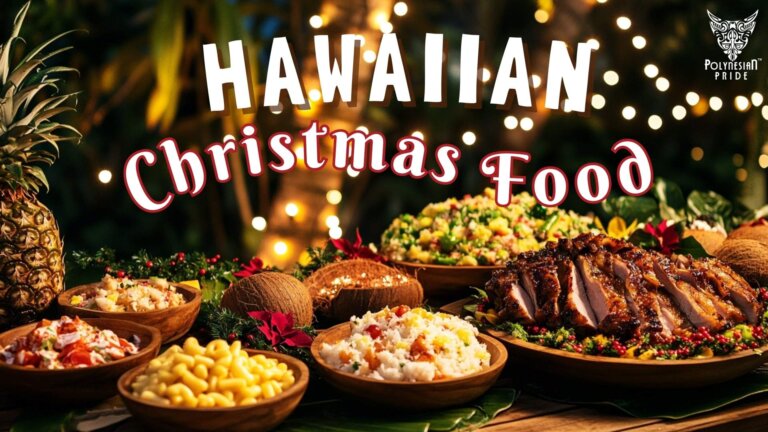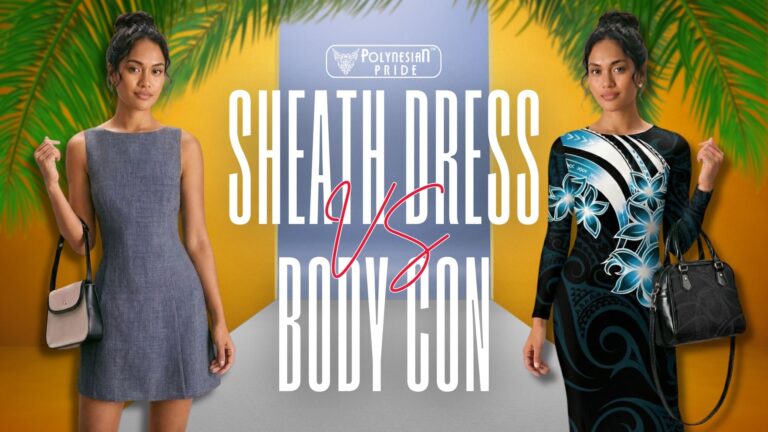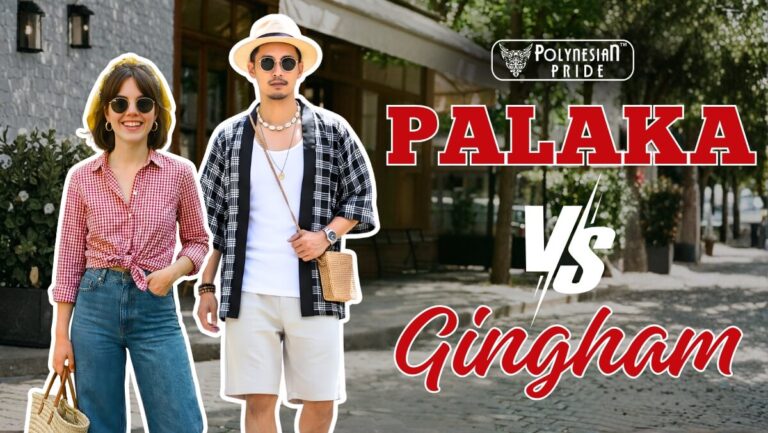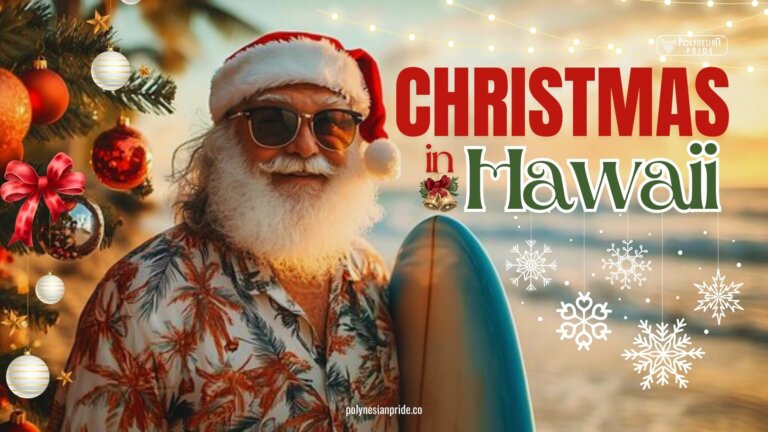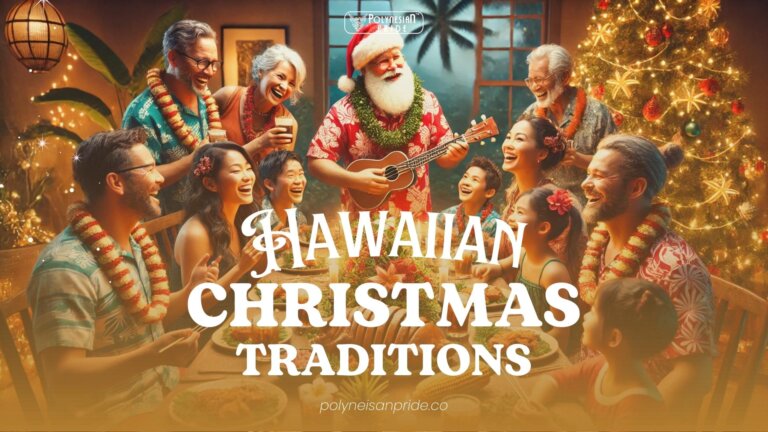What are Hawaiian Clothes Traditional and Their Meaning Today?
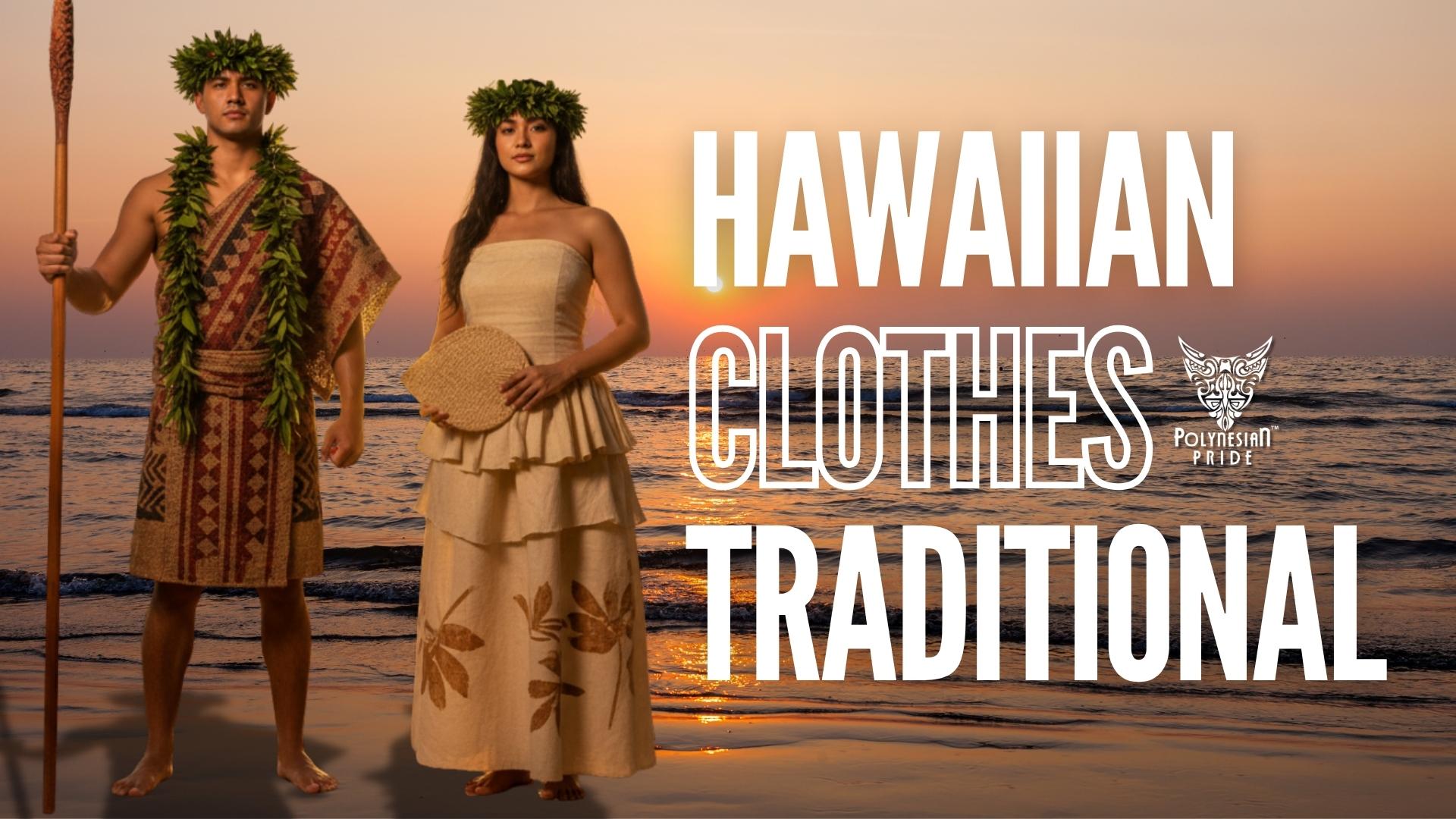
Aloha to Hawaiian Clothes
When you picture Hawaii, you probably see beaches, hula, and flower leis. But Hawaiian clothes traditional go far beyond pretty outfits. They carry stories of culture, history, and identity that are still alive today.
This guide will help you understand their meaning and show how they continue to shape Hawaiian style in modern life.
What Is the Traditional Clothing in Hawaii?
Traditional Hawaiian clothes are garments tied closely to the islands’ history and natural environment.
Before Western contact, Hawaiians made clothing from materials they found in nature, especially kapa (bark cloth) made from the paper mulberry tree.
Over time, Western influence introduced new styles such as the muumuu dress and the aloha shirt, which blended Hawaiian creativity with outside fabrics and tailoring. Today, when people say “Hawaiian clothes traditional,” they usually mean:
- Muʻumuʻu dress: a flowing dress for women, often floral.
- Aloha shirt: a button-down shirt with bright Hawaiian prints.
- Hula costume: skirts, tops, and accessories used for hula dance.
- Lei: garlands of flowers, leaves, or shells symbolizing love and respect.
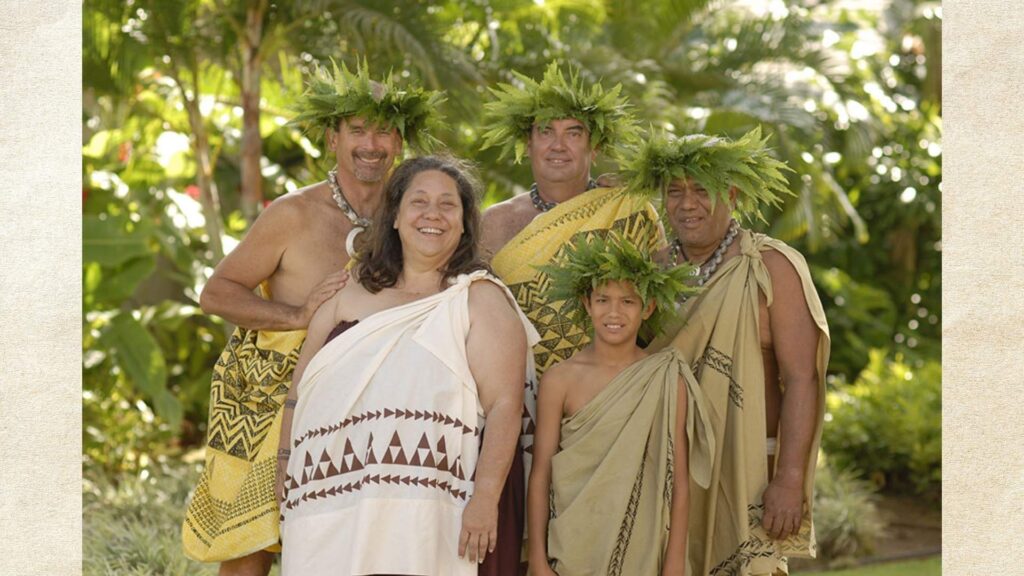
But is that the whole story of Hawaiian clothes traditional? History tells us there’s much more.
Hawaiian clothes traditional in The Pre-contact Era
As mentioned earlier, Hawaiians relied heavily on nature to dress themselves, and one of the most important creations was kapa. Making kapa was not a simple task – it was a skilled craft.
Bark from the paper mulberry tree was stripped, soaked, and pounded with wooden mallets until it became soft, thin, and flexible. Artisans then dyed and stamped it with intricate patterns, turning raw bark into cloth that carried both function and beauty.
Clothing made from Kapa varied by gender and use:
- Malo: a loincloth for men, wrapped around the waist.
- Paʻū: a skirt for women.
- Kīhei: a rectangular shawl, often draped over one shoulder.
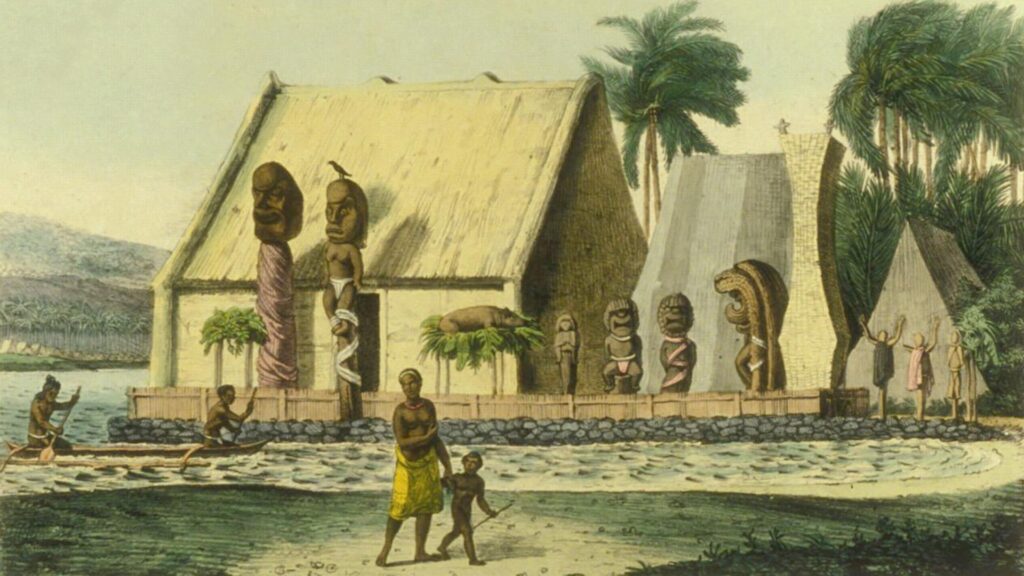
Everyday clothes were simple and suited to the tropical climate, but ceremonial garments carried deep cultural and spiritual meaning.
Chiefs, or aliʻi, wore powerful feathered garments that marked their sacred status:
- ʻAhu ʻula: elaborate feather cloaks crafted from thousands of tiny, colorful feathers.
- Mahiole: feather helmets, combining artistry with divine symbolism.
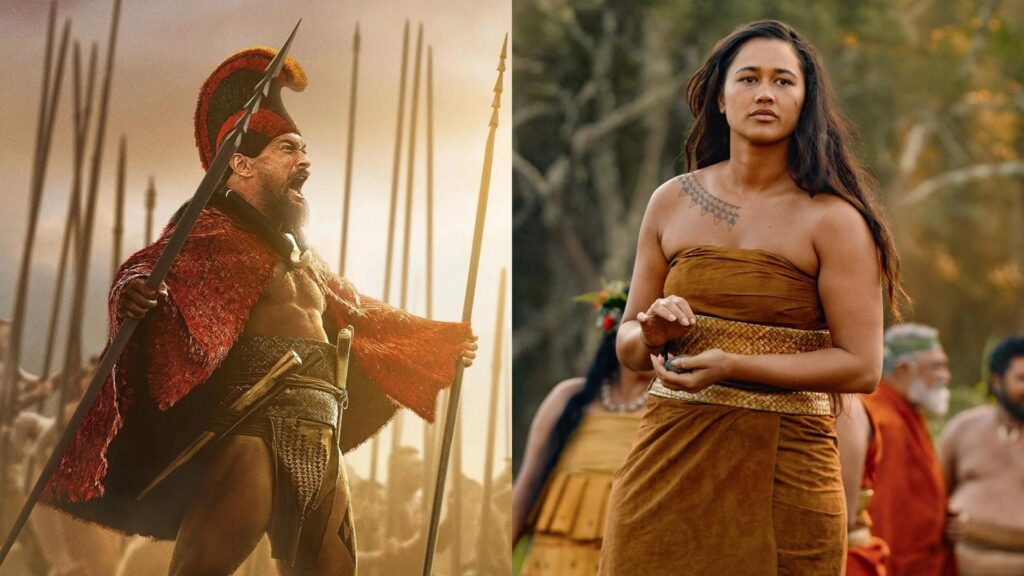
These items were reserved only for the highest ranks of society and were believed to connect chiefs to the gods.
In ancient times, Hawaiian clothes traditional were more than fabric to cover the body; they expressed identity, rank, and a spiritual bond with the land and its creatures.
Hawaiian Fashion Before Missionaries
Early European Influence
Even before the missionaries landed in 1820, Hawaiians had already been experimenting with European styles. When Captain Cook arrived in 1778, trade opened the islands to new fabrics and ideas.
By the early 1800s, imported cloth had become a symbol of status. Nobles used fine fabrics to line their pā‘ū skirts and malo loincloths, showing off rank and prestige.
Chiefs and Sailors as Style Leaders
King Kamehameha and other chiefs often wore European jackets and trousers, while Hawaiian sailors, respected worldwide, returned home with fashionable clothing and textiles for their families.
Far from being isolated, Hawaiian communities were actively connected to global trends.
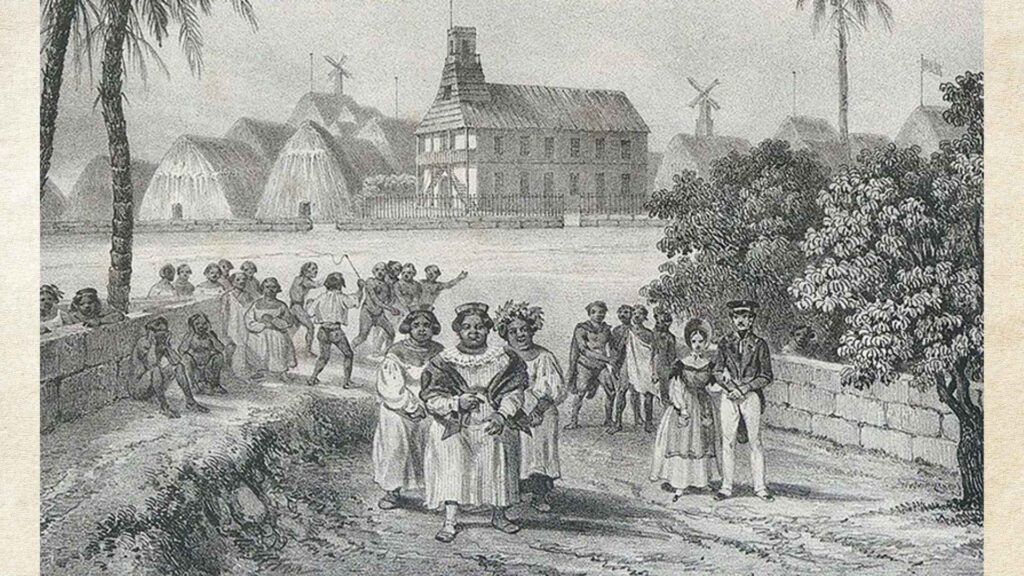
Women and Maritime Connections
Women were part of this story, too. They were not confined to the shore; some even captained ships. A striking example is Caroline Mayhew, who in 1846 took command of a whaler during a smallpox outbreak and saved lives.
This global experience shaped how Hawaiian women viewed and adopted fashion, influencing the way Hawaiian clothes traditional evolved through contact with the wider world.
Fashion-Forward Noblewomen
By 1816, artist Louis Choris painted noblewomen in outfits that mixed European blouses with traditional pā‘ū, proving Hawaiian women were already fashion-forward trendsetters long before missionary wives arrived.
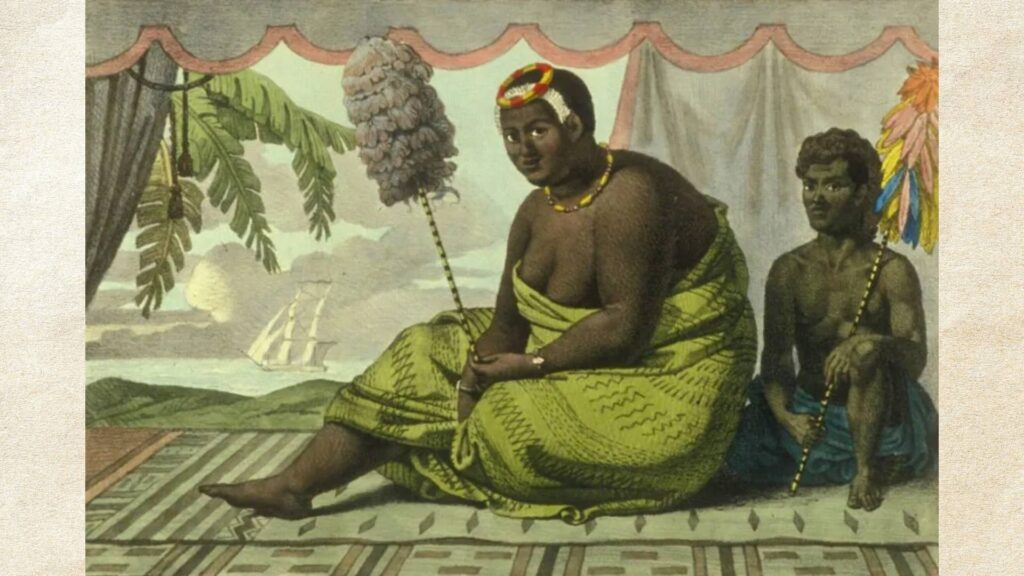
Influence of Missionaries and Western Culture
Missionaries arrived in 1820, but Western styles were already present in Hawaiʻi. What changed during this period was how Hawaiian leaders and women used fashion as a tool of identity and power.
The First Holokū and Kalākua Kaheiheimālie’s Role
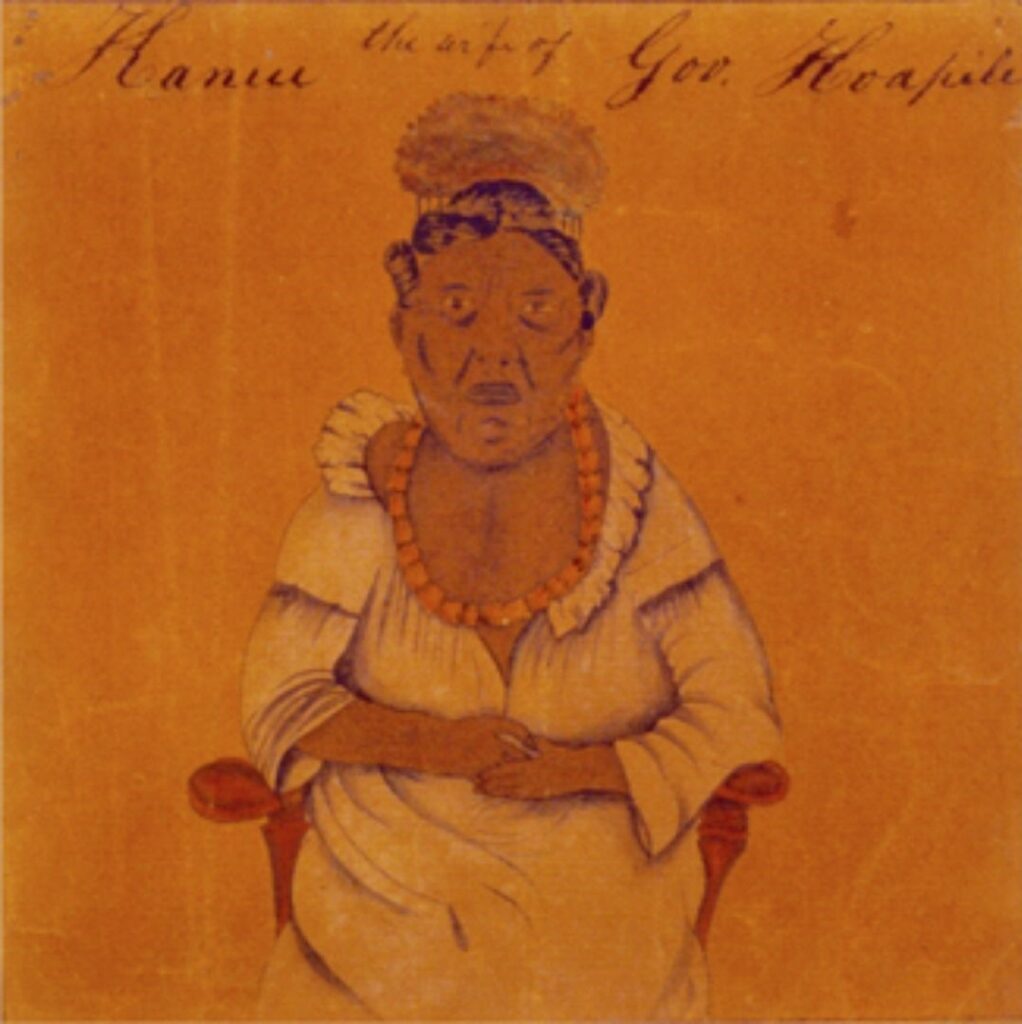
One of the most influential figures was Kalākua Kaheiheimālie. Shortly after missionaries arrived, she asked their wives to sew her a European-style gown, the holokū, using fabric she owned.
This act was not about modesty or submission. It was a strategic move that:
- Displayed her fashion leadership.
- Asserted authority over missionary women by directing their labor.
- Strengthened her political alliances, especially with Kaʻahumanu.
Missionary wife Lucy Thurston documented this “first sewing circle” in Hawaiʻi on April 3, 1820, marking the start of a new era in island fashion and the evolution of Hawaiian clothes traditional.
Holokū vs. Muʻumuʻu
- Holokū: a long, loose gown with a train, designed to make women appear “plump, stout, symmetrical”—traits valued at the time.
- Muʻumuʻu: originally the undergarment beneath the holokū, short-sleeved and without a train. Over time, it transformed into comfortable daywear and eventually became a cultural icon in its own right.
Fashion Over Morality
Missionaries hoped sewing circles would teach Christian modesty, but Hawaiian women approached it differently.
- Adoption of the holokū was gradual, taking nearly two decades to become common by the 1840s.
- Fashion choices were driven by style, status, and personal preference, not by missionary rules.
- Hawaiian women showed agency, embracing trends on their own terms and shaping what became Hawaiian clothes traditional in the modern sense.
The rise of the holokū and muʻumuʻu highlights Hawaiian women’s creativity and independence. Fashion was not something imposed; it was something Hawaiians actively shaped, blending global influences with their own cultural vision.
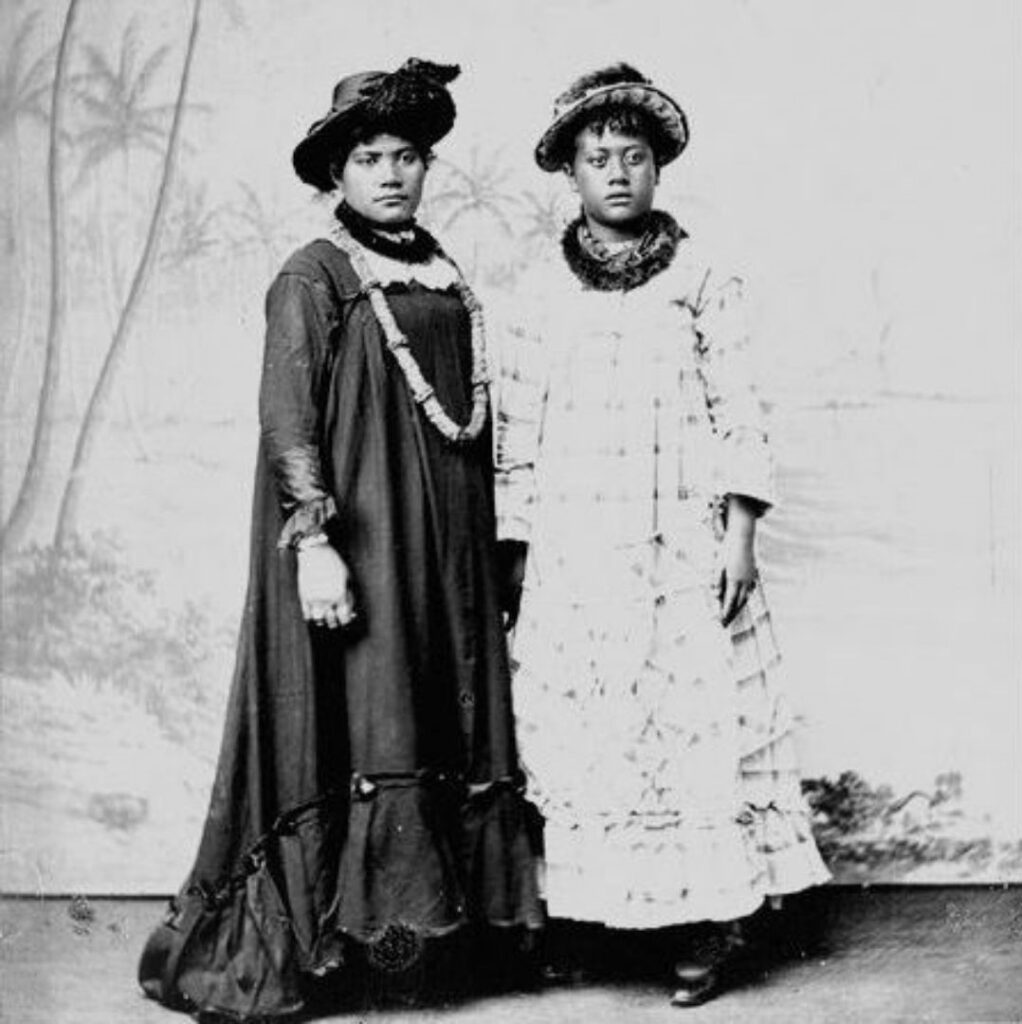
Types of Traditional Hawaiian Clothes
Muumuu Dress Hawaii
When people talk about a Hawaiian traditional dress, they are usually referring to the muʻumuʻu or the holokū, garments that became symbols of cultural pride and elegance.
The muʻumuʻu is one of the most famous pieces of Hawaiian clothing. Originally simple and loose, it allowed comfort in the warm climate. Over time, it became more colorful, decorated with floral prints.
Today, the mu’umuʻu appears in weddings, cultural events, and even as everyday wear for older generations. It’s a symbol of Hawaiian womanhood and pride.
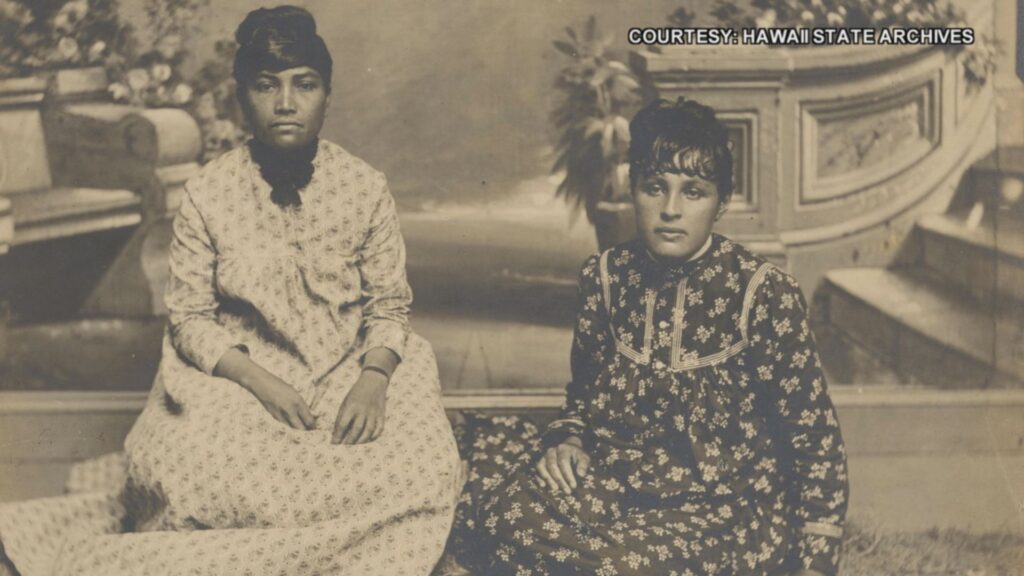
Hula Costume
The hula dance is one of Hawaii’s most important traditions, and its costumes are just as symbolic.
Typical hula attire includes:
- Grass skirts or modern fabric skirts resembling the older kapa style.
- Coconut shell tops or fabric tops for women.
- Malo for male dancers.
- Lei and floral headpieces to complete the look.
These costumes are not simply decorative. Each item plays a role in telling stories through movement.
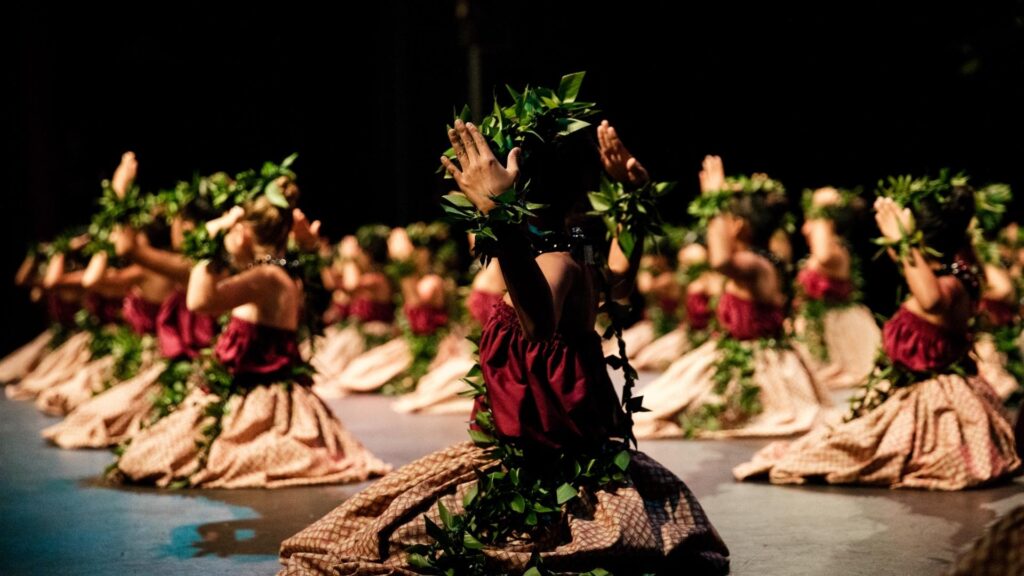
Aloha Shirt
The story of the aloha shirt history is more than just fashion, but it reflects how Hawaiians blended imported fabrics with local creativity to create something uniquely their own.
The aloha shirt is sometimes dismissed as a tourist item, but its roots are cultural. Created in the early 20th century, these shirts showcased Hawaiian artistry through bold prints and bright colors.
Local tailors combined imported fabrics with island-inspired designs. Soon, the aloha shirt became a symbol of Hawaiian identity, embraced by residents and visitors alike. Even today, it represents relaxation, warmth, and the spirit of aloha.

Lei Hawaiian Traditional
A lei is perhaps the most recognizable symbol of Hawaii. These garlands are crafted from flowers, leaves, shells, or even feathers.
Leis are given during greetings, celebrations, graduations, and weddings. Wearing one is a sign of respect and affection. The act of giving and receiving a lei is a cultural practice that continues strongly today.
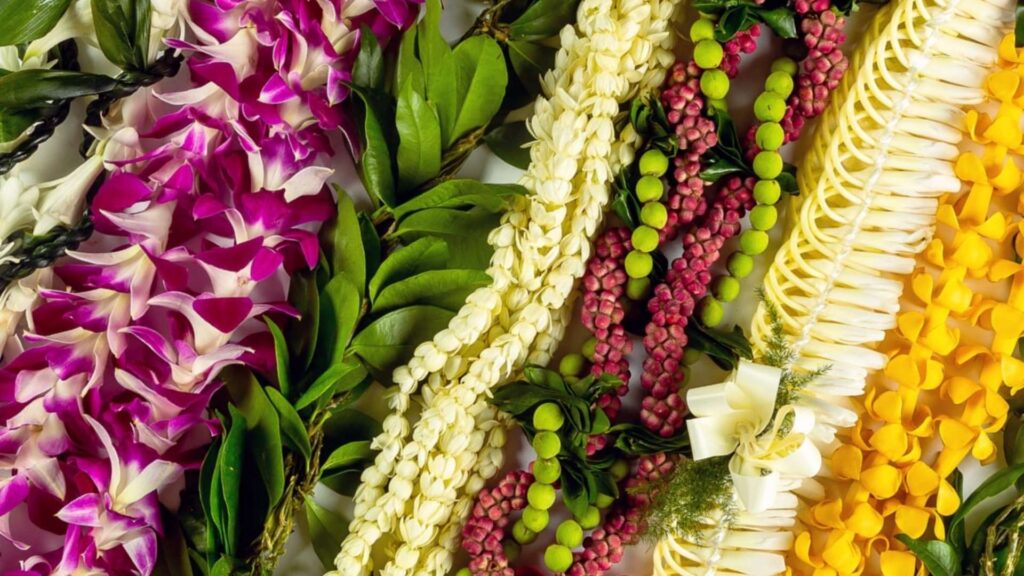
Hawaiian Warrior Clothing
Warriors and chiefs wore outfits that represented authority and divine protection.
- Feather cloaks (ʻahu ʻula) are made from thousands of bird feathers.
- Helmets (mahiole) are designed to protect in battle but also impress.
- Kapa loincloths and capes for everyday warriors.
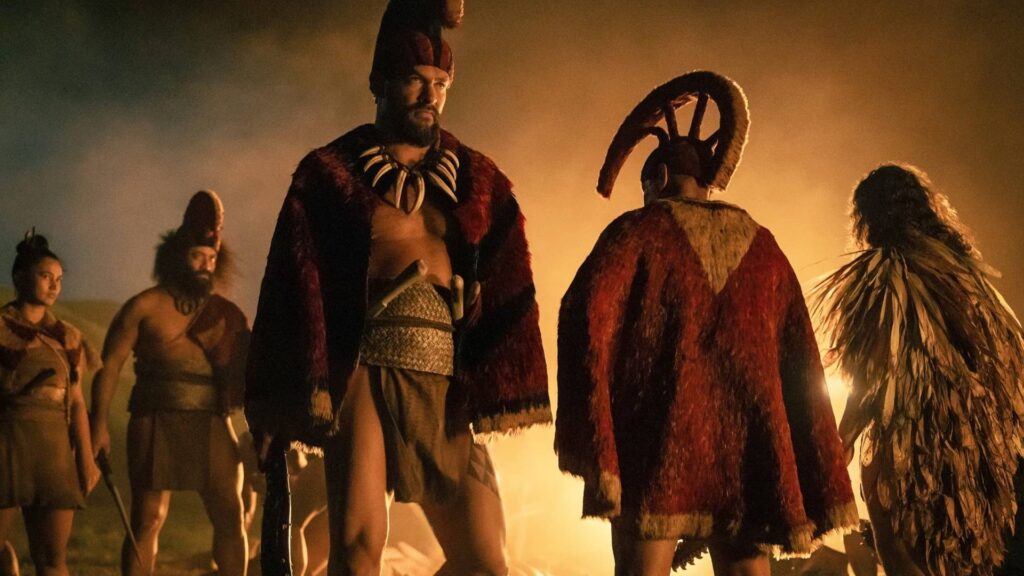
These garments were works of art, requiring immense skill and patience to create.
Traditional Hawaiian Outfit for Luau and Festivals
Luaus are Hawaiian feasts with music, dance, and food. For both locals and visitors, dressing in traditional clothes adds to the spirit of the event.
- Men often wear aloha shirts paired with shorts or trousers.
- Women choose muʻumuʻu dresses or floral skirts.
- Everyone enjoys wearing leis, whether flower or shell garlands.
- Hula performers bring the cultural heart of the luau with authentic hula costumes.
If you’re attending a luau, wearing Hawaiian clothes traditional is a way to participate respectfully.
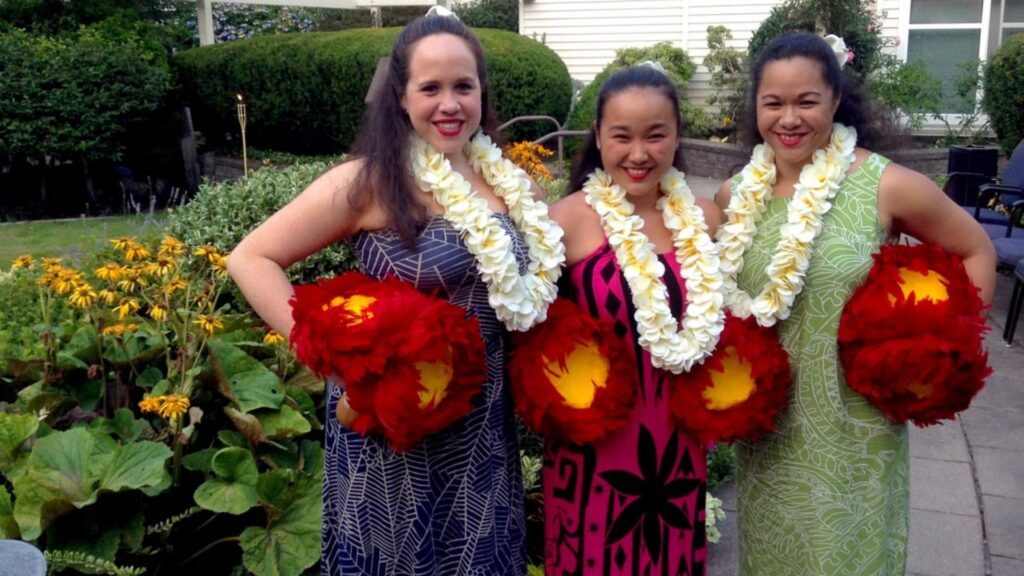
Traditional Hawaiian Wedding Attire
Hawaiian weddings are full of cultural beauty, and clothing is at the heart of it.
The Bride
The bride traditionally wears a white holokū, a long, elegant gown that reflects both Hawaiian heritage and Western influence. To complete the look, she often pairs it with:
- A lei of fresh flowers, symbolizing love and respect.
- Haku lei (flower crown) is worn on the head. Kūpeʻe (floral or leafy bracelets/anklets) add natural grace.
Sometimes, a veil or kapa-inspired shawl is used for extra symbolism.
The Groom
The groom may wear a white aloha shirt or a malo with a sash, often complemented by a maile lei draped over the shoulders, representing honor and commitment.
The Guests
Female guests often wear muʻumuʻu dresses decorated with tropical prints, while male guests choose colorful aloha shirts. This keeps the atmosphere festive and true to the Hawaiian spirit.
This style blends tradition with romance, making Hawaiian weddings deeply spiritual and visually stunning.
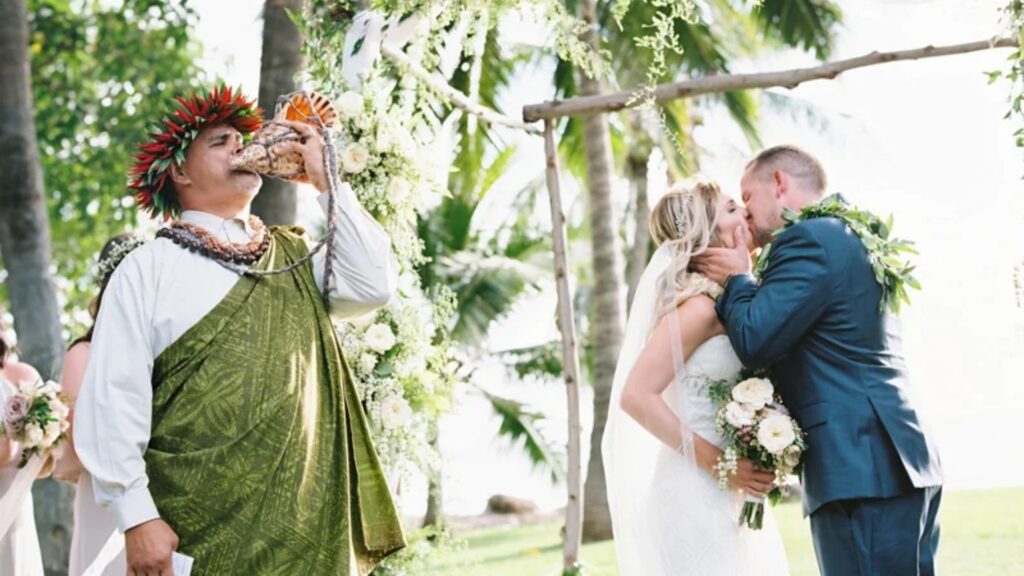
Hawaiian Clothes in the Wider Polynesian Context
Hawaii is part of Polynesia, a region that includes Samoa, Tahiti, and Tonga. Traditional Hawaiian clothing shares similarities with these cultures. For example:
- Samoa: lavalava skirts.
- Tahiti: pareo wrap skirts.
- Tonga: ta’ovala mats worn around the waist.
Understanding Hawaiian clothes traditional also means recognizing the broader Polynesian heritage that influenced and inspired them.
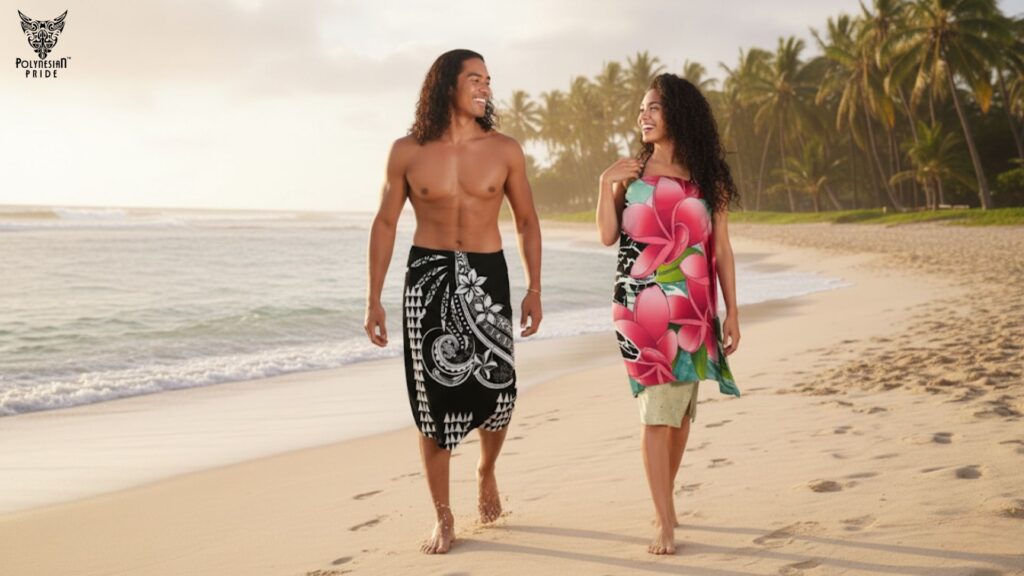
Where to Buy Hawaiian Traditional Clothes?
If you want to experience or purchase Hawaiian traditional clothes, here are some ideas:
- Local shops in Hawaii: especially near Honolulu and Maui cultural centers.
- Online marketplaces: Etsy, Amazon, and Hawaiian specialty stores such as Polynesian Pride Shop.
- Cultural festivals: events where authentic craftspeople sell clothing and accessories.
- Hula schools (halau hula): where you can learn dance and sometimes purchase traditional attire.
Buying from local Hawaiian designers helps preserve the culture and supports artisans who keep traditions alive.
Final Thoughts
Hawaiian clothes traditional are more than outfits. They are living expressions of history, spirituality, and community. From kapa fabrics of ancient times to the aloha shirt you see on the street today, these clothes tell stories of survival, adaptation, and pride.
Next time you see a lei or slip on an aloha shirt, remember the centuries of meaning behind it. Hawaiian fashion isn’t just about looking good; it’s about honoring the spirit of the islands.
FAQs
1. What is the traditional clothing in Hawaii called?
Traditional clothes include the muʻumuʻu dress, aloha shirt, hula costume, lei, and kapa-based garments like the malo and paʻū.
2. Do Hawaiians still wear traditional clothes today?
Yes, many people wear muʻumuʻu and aloha shirts for daily life, ceremonies, and cultural events. Hula dancers continue to use traditional attire.
3. What do you wear to a Hawaiian luau?
Guests often wear aloha shirts, floral dresses, or casual tropical outfits. Leis are commonly given and worn.
4. Is the aloha shirt considered traditional?
Yes, it blends Western tailoring with Hawaiian motifs, and over time, it has become part of Hawaiian tradition.
5. What makes the muʻumuʻu dress unique to Hawaii?
Its loose, flowing design was adapted to Hawaii’s climate and culture. Over generations, it became a symbol of Hawaiian identity and femininity.

I’m a lifestyle curator who has blended Polynesian foodways and fashion into everyday life for over five years. I celebrate makers, materials, and style—with heritage as the headline, not the footnote.
My contact:
Email: [email protected]
Tel: +689 87 246 367

